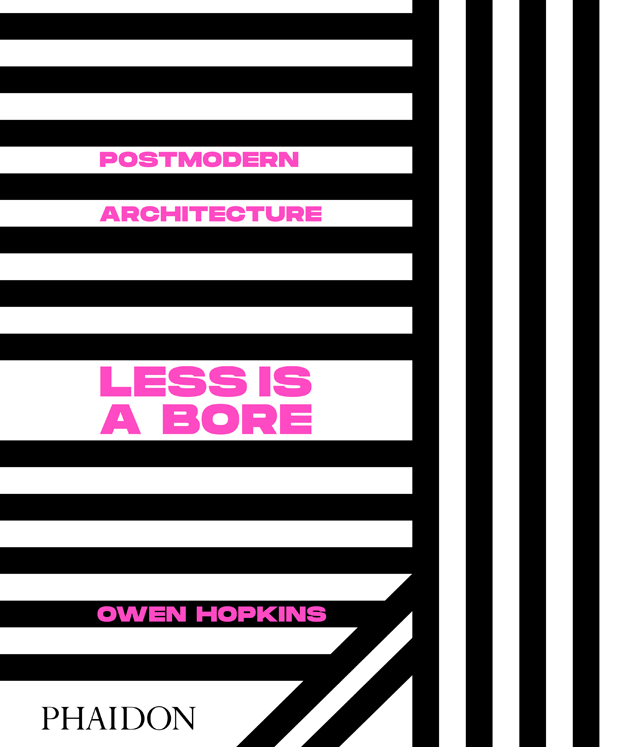BOOK:Postmodern Architecture-Phaidon Publications
 Postmodernism began as a critique. By the late 1960s and early 1970s, Modernism was no longer seen as radical or even relevant. Designers began to question whether architecture indeed had the power to be a utopian remedy for social problems, as more radical Modernists had claimed. Chicago architect and provocateur Stanley Tigerman illustrated this demise in his memorable 1978 photomontage, “The Titanic”. In it, Tigerman shows Ludwig Mies van der Rohe’s iconic 1956 Crown Hall at the Illinois Institute of Technology sinking into Lake Michigan. The book “Postmodern Architecture” takes its subtitle from Postmodernist icon Robert Venturi’s spirited response to Mies van der Rohe’s dictum that “less is more”. One of the 20th Century’s most controversial styles, Postmodernism began in the 1970s, reached a fever pitch of eclectic non-conformity in the 1980s and 90s, and after nearly 40 years is now enjoying a newfound popularity. Postmodern Architecture showcases examples of the movement in a rainbow of hues and forms from around the globe.-Dimitris Lempesis
Postmodernism began as a critique. By the late 1960s and early 1970s, Modernism was no longer seen as radical or even relevant. Designers began to question whether architecture indeed had the power to be a utopian remedy for social problems, as more radical Modernists had claimed. Chicago architect and provocateur Stanley Tigerman illustrated this demise in his memorable 1978 photomontage, “The Titanic”. In it, Tigerman shows Ludwig Mies van der Rohe’s iconic 1956 Crown Hall at the Illinois Institute of Technology sinking into Lake Michigan. The book “Postmodern Architecture” takes its subtitle from Postmodernist icon Robert Venturi’s spirited response to Mies van der Rohe’s dictum that “less is more”. One of the 20th Century’s most controversial styles, Postmodernism began in the 1970s, reached a fever pitch of eclectic non-conformity in the 1980s and 90s, and after nearly 40 years is now enjoying a newfound popularity. Postmodern Architecture showcases examples of the movement in a rainbow of hues and forms from around the globe.-Dimitris Lempesis






